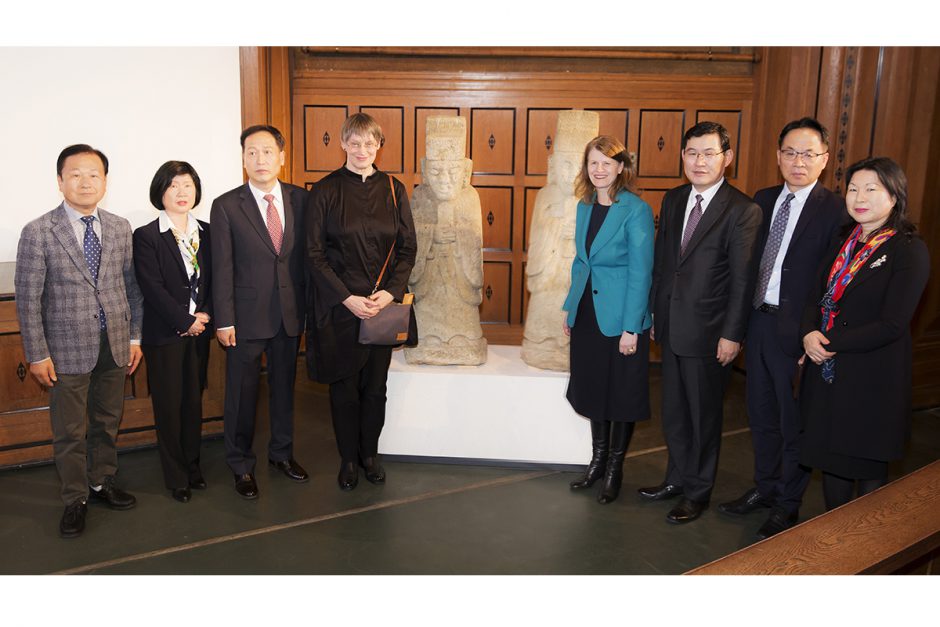Restitution – two tomb guards return to the republic of Korea

On Tuesday, March 19th 2019, MARKK said goodbye to two stone figures of tomb guardians which were restituted to the Republic of Korea. Both figures had been part of the MARKK collection since 1987 and have now entered the collection of the National Folk Museum of Korea. Until March 17th 2019, they were shown in the exhibition “Uri Korea – Ruhe in Beschleunigung”, where the context of their illegal purchase was also stated.
The tomb guards represent civilian officials of the Joseon-dynasty. Presumably they were made in the 19th century – although earlier dating has been suggested too – to guard the peace of a high-ranking person´s tomb. During the preparations for the exhibition “Uri Korea – Ruhe in Beschleunigung”, provenance research by the curator Dr. Susanne Knödel brought out that they had been illegally exported from Korea. Thereupon the Korean authorities were notified. When in early 2017 the restitution papers from the Overseas Korean Cultural Heritage Foundation OKCHF arrived, MARKK and the National Folk Museum of Korea agreed to display the figures in the jointly curated exhibition “Uri Korea”, and to state the circumstances of their acquisition, until their return to Korea.
There is no certain documented evidence on how exactly the tomb guardians came to be on offer in the Korean art trade. During the economic boom of the republic of Korea in the 1970ies new constructions were set up on the grounds of many family tombs. Many a tomb guardians landed in the art trade, despite the existence of a Korean law of protection for cultural assets. A private German customer bought the figures in 1983 and, despite his awareness of an export ban, hid them in a container to bring them to Germany. MARKK acquired them in 1987. Today it is not possible to determine what information about the provenance the museum had at the time.
Prof. Dr. Barbara Plankensteiner, director of MARKK: „This case shows that until recently, illegal export of historic cultural assets was seen as a trivial offence. There was usually no sense of right and wrong. In this context we as curators have to critically question ourselves. Even as late as the late 20th century, the sources and export conditions of purchased art and cultural assets were not verified nor questioned. Meanwhile it is common standard to investigate the place/country of origin of new entries into our collection. Also we agree and approve of the Unesco- conventions regarding illegally exported artefacts. We are glad we could clear the circumstances and Korea is getting back the two valuable figures. This is an important step to strengthen and further our long-standing cooperation with our Korean colleagues.”
The Korea collection of the MARKK consists of over 2700 objects. Since 2014 the objects were researched by the National Research Institute of Cultural Heritage (NRICH) and with the assistance of numerous experts from different Korean museums and research facilities. In the run-up to the opening of the exhibition “Uri Korea”, NRICH published a catalogue of the two-thirds of the collection.